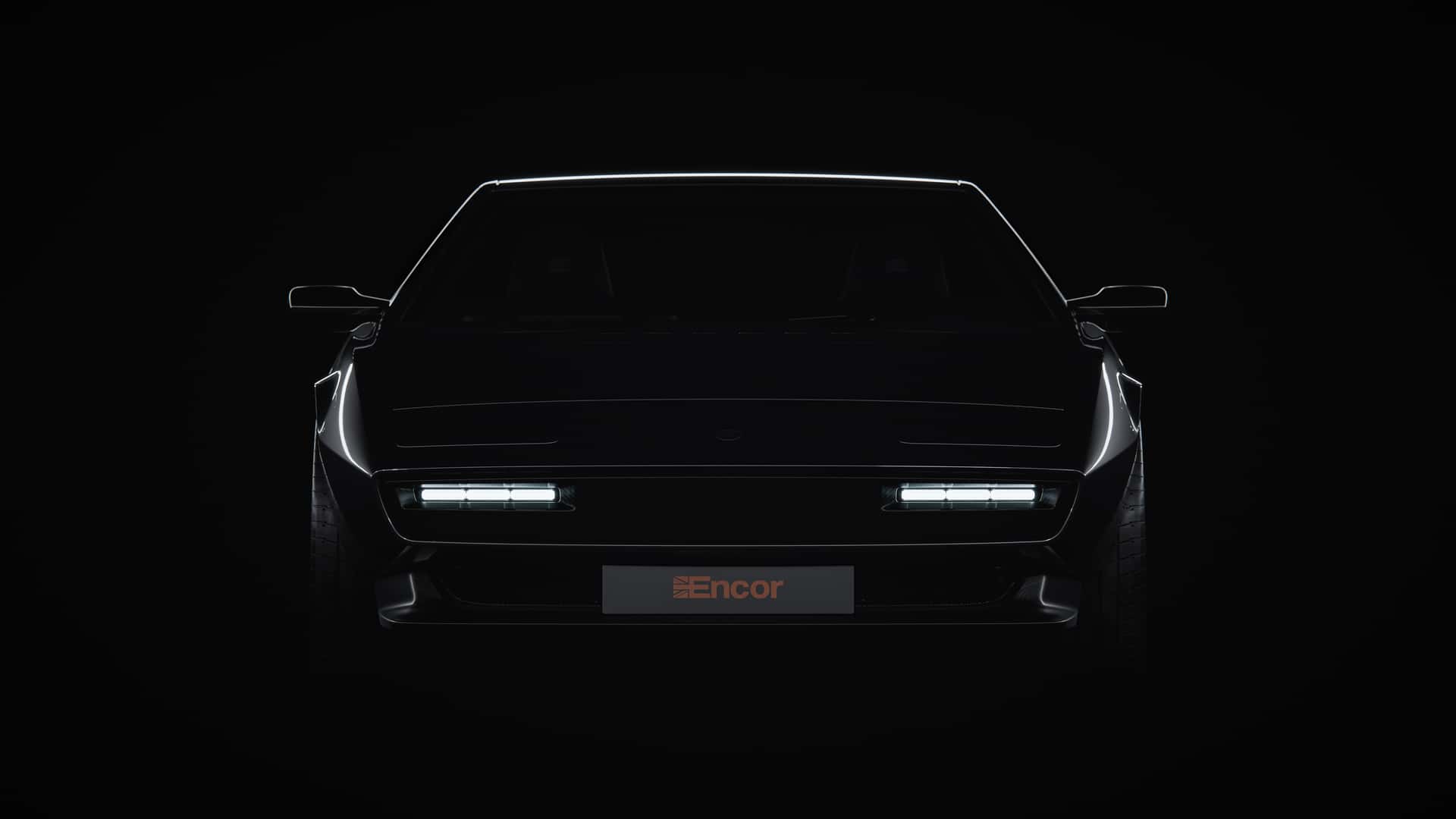The V8 Engine That Changed Muscle Cars Forever
With the debut of the Pontiac GTO in 1964, all other automakers scrambled to replicate its success, which was the official launch of the Golden Age of American Muscle. Thanks to a ban on big engines for all GM divisions, the GTO was limited to a decent, but not mind-blowing, 348-horsepower 389 V-8. As Detroit battled over muscle car supremacy, a full-on horsepower war broke out, which saw cool cars packed with increasingly potent engines. Through a series of tactical blunders by GM and Ford, this power struggle was almost immediately won by Chrysler.
Introduced for street use in 1966, the Chrysler 426ci Hemi V-8 put professional racing performance in factory cars. The Mopar Dodge and Plymouth muscle cars equipped with the 426 Street Hemi were genuine terrors that couldn't be beat off the line. It wasn't a case where the other automakers simply didn't have an answer for this awesome V-8, they did but couldn't or wouldn't unleash it on the public. The 426 Hemi was an engineering marvel that completely changed muscle cars forever, but it got a little help from its competitors' miscalculations.
In order to give you the most up-to-date and accurate information possible, the data used to compile this article was sourced from Stellantis, and other authoritative sources.

Hemi 'Cuda 426
The Evolution Of Chrysler’s Hemi Engine
The Chrysler Hemi engine defined the classic muscle car era and continues to set the standard for American power and performance
The 426 Hemi Was Forged In FirePower
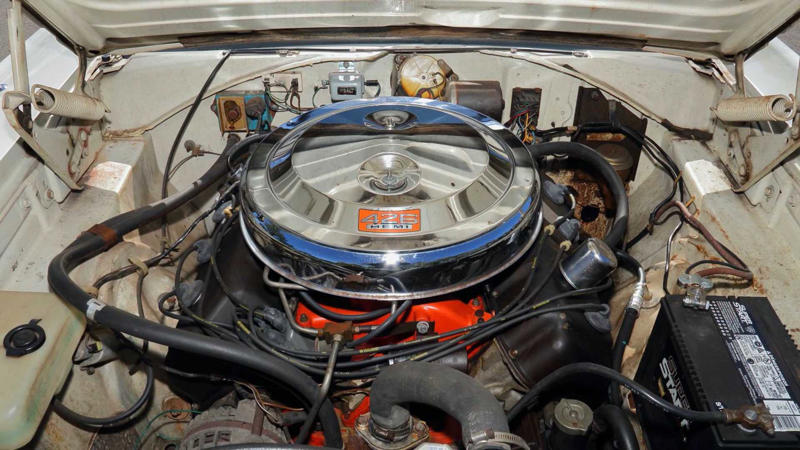
Mecum
Like all good superheroes, the 426 Hemi has an origin story that started way back in WWII, when Chrysler developed a 2,500 horsepower V-16 engine with hemispherical combustion chambers for the Republic P-47 Thunderbolt fighter aircraft. If this sounds like Captain America's beginning, it kind of is. The war thankfully ended before this Hemi-powered instrument of destruction could be deployed, so Chrysler took what they learned and applied it to passenger vehicles.
Introduced in 1951, the FirePower line of V-8 engines were the first Hemis, though they were never marketed as such. The star of this series was the 392, which pumped 345 horsepower into the 1957 Chrysler 300C, largely regarded as the precursor to the muscle car.
426 Hemi Specs
Displacement | 426ci (7.0-liter) |
|---|---|
Configuration | 90° V8 |
Induction | Naturally aspirated/dual inline four-barrel Carter AFB carburetors |
Fuel | Gasoline |
Bore x Stroke | 4.25 x 3.75 (108.0 × 95.3) |
Compression Ratio | 10.25:1 |
Horsepower | 425 HP |
Torque | 490 LB-FT |
Max Engine Speed | 6,500 RPM |
Chrysler ditched the FirePower in 1958 in favor of their B and RB big-blocks that are sometimes referred to as "Wedge" V-8s due to their, duh, wedge-shaped combustion chambers. This group had some killer entries like the legendary Max Wedge 413 and 426 that could pump out up to 425 horsepower.
Chrysler revived the hemispherical engine concept in the early 1960s, not as something for production vehicles, but rather for racetrack use. The 426ci Hemi V-8 was developed specifically to go under the hood of Richard Petty's Plymouth Belvedere, so he could dominate NASCAR, which he did. This radical new engine cranked out 425 horsepower with 490 pound-feet of torque, and was unbeatable.
NASCAR Ban
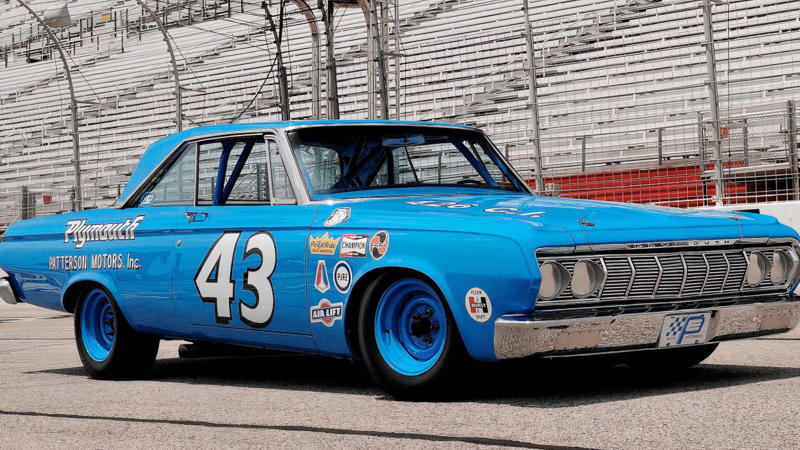
National Auto and Truck Museum
Richard Petty won his first of seven NASCAR championships in 1964 behind the wheel of a Hemi-powered Plymouth, taking nine checkered flags, 43 top-ten finishes, and, at the time, a record 40,252 points. The Hemi was such a dominant force on the track that Ford actually filed a complaint and got NASCAR to ban it until it was homologated.
That's kind of a funny word, but it just means that in order to qualify for various racing series or circuits with stock classes, engines and/or cars have to sell a certain number of units to the public. The threshold is usually pretty low, like 500 or 1,000, which can be taken care of with a limited edition, but Chrysler decided to go full-bore and make the 426 Street Hemi available to all Dodge and Plymouth intermediate cars.
Found On Road, Dead
In being a Car Karen, Ford inadvertently made the 426 Street Hemi happen, which would go on to embarrass all of its cars for the rest of the classic muscle car era. This phase of the story actually has an even funnier twist. Ford tried to counter the Hemi in NASCAR competition with their 427 "Cammer" V-8 that was capable of 657 horsepower.
Chrysler lobbied NASCAR to ban this engine, arguing that it had never been sold in a production vehicle. The 427 was kicked out, and all Ford had to do was sell a few cars equipped with it, but they simply gave up. Imagine how different the Golden Age would have been if the Torino had 600+ horsepower V-8 engine option.
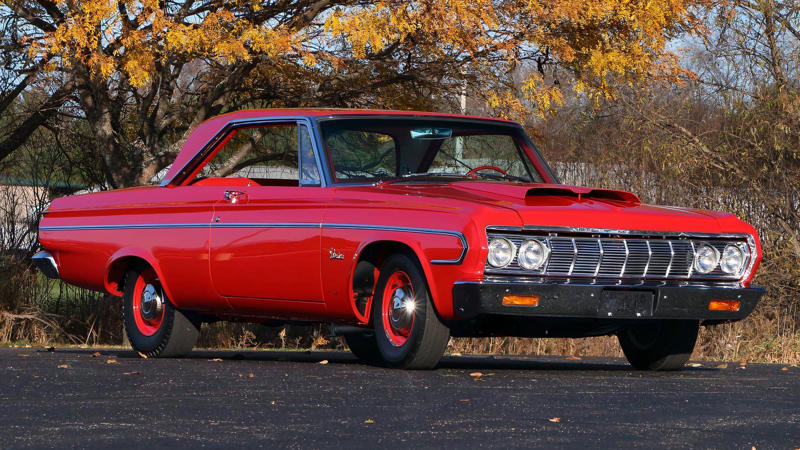
3/4 side view of 1964 Plymouth Belvedere Max Wedge
The Most Important Mopar Muscle Car
The 1964 Belvedere was the first Mopar muscle car with a 426 Hemi and paved the way for Dodge and Plymouth dominance in the Golden Age.
The 426 Hemi Hits The Streets
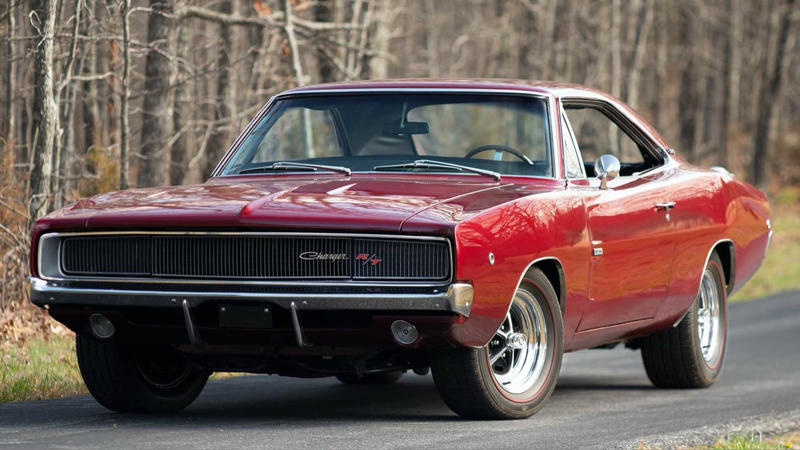
Red 1968 Dodge Charger R/T
The 426 Hemi was banned from NASCAR for the 1965 season, and so Chrysler unleashed the street version for the 1966 model year to get it back on the track. This wondermill was available in the Plymouth Belvedere and Satellite, while over at Dodge it was an option for the Coronet as well as the newly created Charger.
The Belvedere and Coronet platforms came in two-door, four-door, and station wagon configurations, so conceivably, someone could have ordered a Hemi station wagon. There's no evidence that ever happened, but Dodge did produce a small number of four-door Coronet sedans with Hemi engines, making for the weirdest muscle cars of the classic era.
426 Street Hemi Car Production Numbers
- 1968-1971 Plymouth Road Runner - 2,014 units
- 1967-1971 Plymouth GTX - 1,477 units
- 1968-1971 Dodge Charger R/T - 875 units
- 1966-1967 Plymouth Satellite - 850 units
- 1970-1971 Plymouth Hemi 'Cuda - 781 units
- 1966-1968 Dodge Coronet - 746 units
- 1966-1967 Plymouth Belvedere - 683 units
- 1967-1970 Dodge Coronet R/T - 633 units
- 1966-1967 Dodge Charger - 586 units
- 1968-1971 Dodge Charger Super Bee - 441 units
- 1970-1971 Dodge Challenger R/T - 427 units
- 1970 Plymouth Superbird - 135 units
- 1969 Dodge Charger Daytona - 70 units
- 1969 Dodge Charger 500 - 60 units
In 1968, Chrysler reigned in the Hemi free-for-all and mandated that they could only be equipped in designated muscle cars. For Dodge, that meant the Charger R/T, Coronet R/T, and Super Bee, and, for Plymouth, the Road Runner as well as its upscale sibling, the GTX. During the development of the 426 Hemi, engineers dubbed it the "Elephant" engine because of its massive size, weight, and power. In street form, it gained another extreme, namely its price.
According to Dodge Garage, the 426 Street Hemi option in 1966 ran $907.60, which was about half the price of an entire car at the time. That translates to around $8,840 in 2025 dollars, which actually doesn't sound too bad seeing as it's a freakin' Hemi, but it was considered steep back in the day.
Factory Drag Hemis

Mecum
The indefinitely cool Dodge Dart and Plymouth Barracuda were left out of the Hemi sweepstakes, at least in terms of regular production. They did both get a special Hemi-tastic factory drag car edition. For the Dodge it was the 1968 Dart Super Stock, which was so fast, that it came with a disclaimer upon purchase, warning against driving it on the street. While the Barracuda would eventually get a 426 in the third-gen 1970 Hemi 'Cuda, it got a taste of the fury in 1968.
Around 50 fastback Barracudas were built by Hurst Performance with 426 Street Hemis, which made for a car that could run a quarter mile in the low 10s. Imagine how different the Golden Age would have been if these mighty mites had been mass-produced.
The Hemi Gets Banned Again (Sort Of)

Mecum
Having successfully homologated the 426 Hemi, Chrysler returned to NASCAR and found a new way to get banned. Dodge had put all their hopes in the Charger 500 to dominate the circuit, but its design created tremendous lift, and drivers said it was like speeding on ice. Dodge came back with the 1969 Charger Daytona which was super aerodynamic with a big nose cone and crazy rear flying wing.
Having learned their lesson in '64, Dodge sold 503 of these to the public before the Daytona hit the track and kicked all the ass. It was the first car to do a 200 MPH lap, and it won almost every race it ran. This time, it wasn't Ford crying foul, but rather NASCAR, who decided that all "aerocars" including the Plymouth Superbird, Ford Torino Talledega, and Mercury Cyclone Spoiler II could no longer compete.
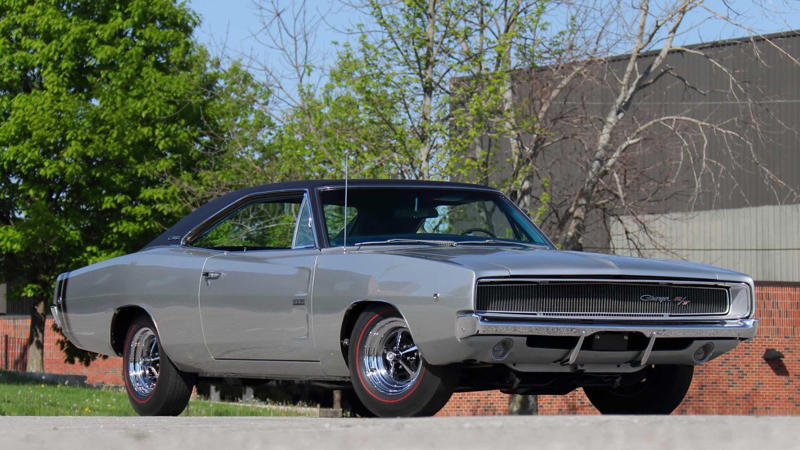
1969 Dodge Charger R/T 426 Hemi
Every Car That Came Factory Equipped With The 426 Street Hemi
Only 14 cars were ever blessed enough to come factory-equipped with the iconic 426 Street Hemi V-8.
The 426 Hemi Rules The Road
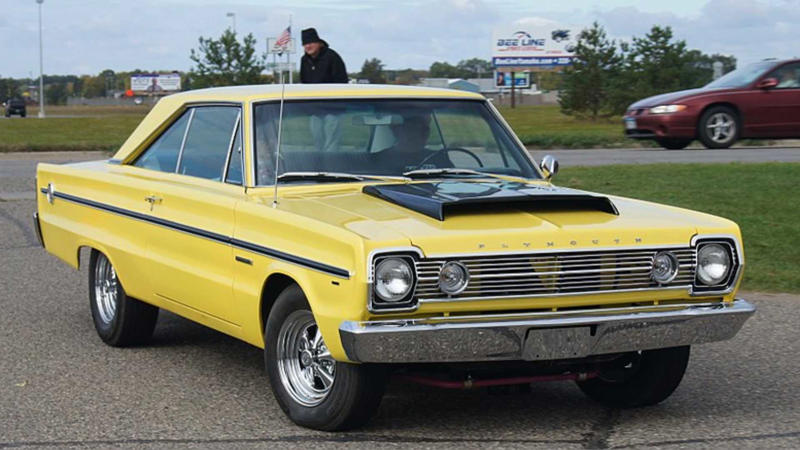
Yellow 1966 Plymouth Belvedere Satellite
The 426 Street Hemi was a game-changer for the Golden Age of American Muscle, which made Mopar the rulers of the road. It was, of course, due to Ford and Chevy essentially ceding the crown to Dodge and Plymouth. GM had a ban on engines over 400 cubic inches in intermediate cars, so Buick, Chevy, Olds, and Pontiac were at a disadvantage in the horsepower wars.
Chevy had a 427ci Tri-Power V-8 that pumped out 435 ponies, but it was only allowed in the Corvette. Ford, of course, opted out of the race by not homologating their massive-output 427, so the 426 Hemi declared victory without ever having to fire a shot.
'66 Muscle Car Drag Race
Plymouth Satellite | Chevy Chevelle SS | Ford Mustang GT | |
|---|---|---|---|
Engine | 426ci Hemi V-8 | 396ci V-8 | 289ci V-8 |
Horsepower | 425 HP | 375 HP | 271 HP |
Torque | 490 LB-FT | 415 LB-FT | 190 LB-FT |
Transmission | 4-speed manual | 4-speed manual | 4-speed manual |
0-60 Time | 5.3 seconds | 6.0 seconds | 7.5 seconds |
Quarter-mile | 13.6 seconds | 14.4 seconds | 15.2 seconds |
Top Speed | 148 MPH | 118 MPH | 128 MPH |
To demonstrate how dominant the 426 Street Hemi was, we're going to put the baddest 1966 muscle cars from each of the Big Three on the line and prove it with a knock-down drag-out race. While the Chevelle SS396 performed the best of the two no-Mopars, this wasn't really a race, with the Plymouth Belvedere Satellite smoking the Chevy by nearly a second in the quarter mile.
While the horsepower wars were settled in 1966 with the introduction of the 426 Street Hemi, both GM and Ford would try to play catch-up for the remainder of the classic muscle car era. GM finally lifted its ridiculous big engine ban in 1970 and there were some 454s and 455s that finally got their cars running in the 13s, but by then Hemi Mopars were destroying quarter-mile runs with 13.1-second times.
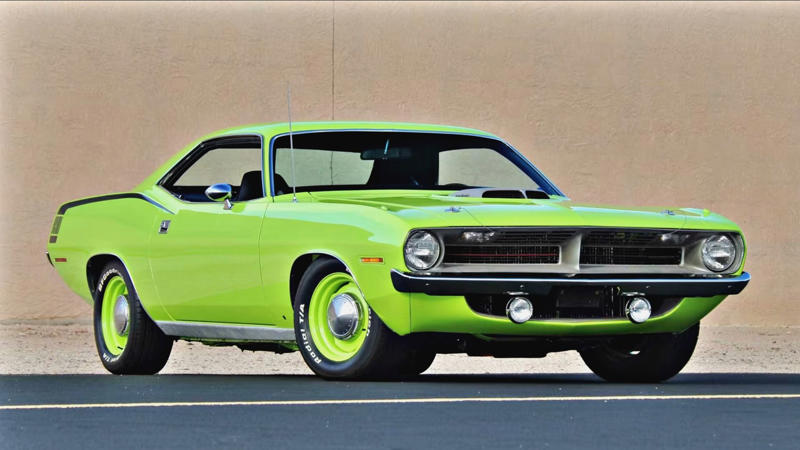
Green 1970 Plymouth Hemi Cuda
10 Best Classic 13-Second Muscle Cars
Under 14 seconds was the benchmark for speed in the classic muscle car era and these are the quickest 13s Detroit ever made
426 Street Hemi Legacy
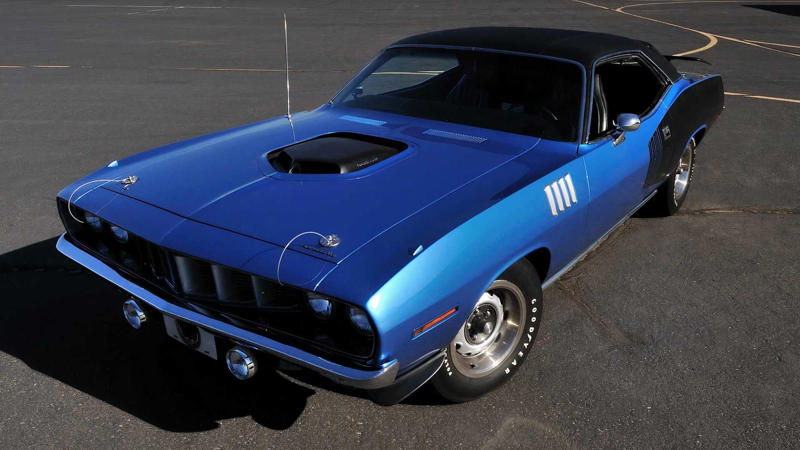
Mecum
The Pontiac GTO started the muscle car craze in 1964, but the 426 Street Hemi redefined things in '66 by giving them genuine muscle. There were fast cars in the Golden Age, but none of them were Hemi-fast, besides, obviously, the Mopars that had them. The truly amazing thing about this engine was that anyone with the cash could drive off the dealer lot in a pro-level drag car.
The 426 Hemi is even more special because it's actually quite rare, with less than 10,000 cars equipped with one between 1966–1971. On top of being the baddest thing on the street, it was membership into an elite club of horsepower freaks.
Hemi Auction Busters
- 1971 Plymouth Hemi 'Cuda Convertible - $3.5 million
- 1970 Dodge Charger Daytona - $3 million
- 1970 Plymouth Hemi 'Cuda Convertible - $2.3 million
- 1970 Plymouth Hemi 'Cuda Convertible - $1.95 million
- 1970 Plymouth Superbird - $1.65 million
- 1970 Dodge Challenger R/T Convertible - $1.45 million
- 1969 Dodge Charger Daytona - $1.43 million
- 1969 Dodge Charger Daytona - $1.32 million
The elusive nature of the 426 Street Hemi has extended its dominant legacy into the modern era, where it's still kicking everyone's ass, only now on the auction block. Matching-numbers Hemi-equipped classics can and do sell for a million dollars or more. In fact, all the top-selling regular production of classic muscle cars are Hemi Mopars because they are piston-pumping pieces of history.
Nothing defines the classic era of American muscle quite like a '68 Charger R/T Hemi or a '70 Hemi 'Cuda. Engines such as the Chevy 454 LS6 or the Ford 428 Super Cpbra Jet have their share of fans, but with the 426 Street Hemi, it's a lifestyle and almost a religion.































